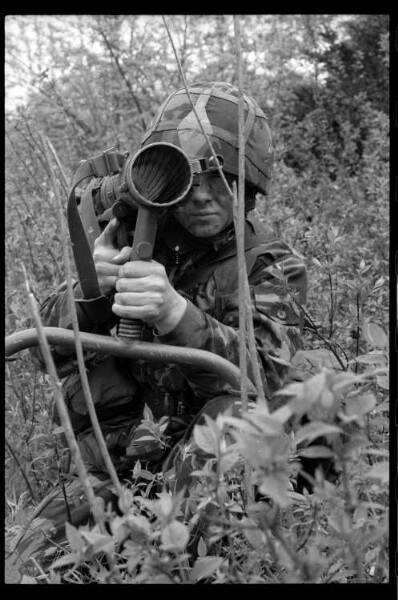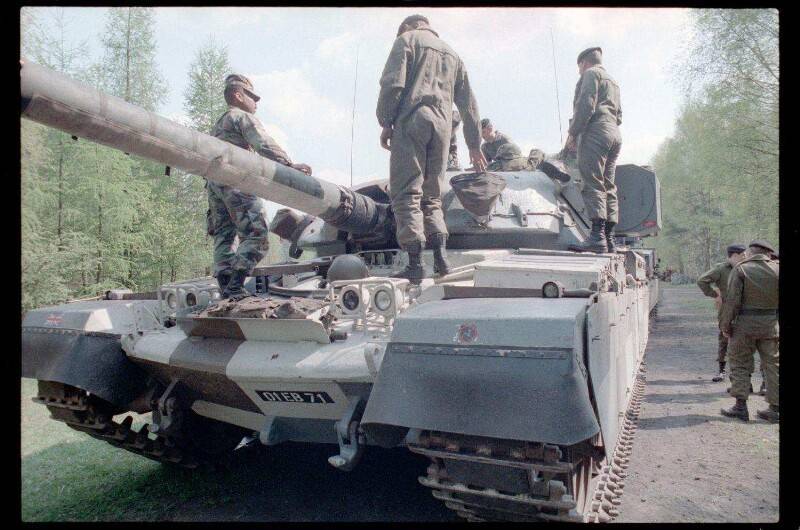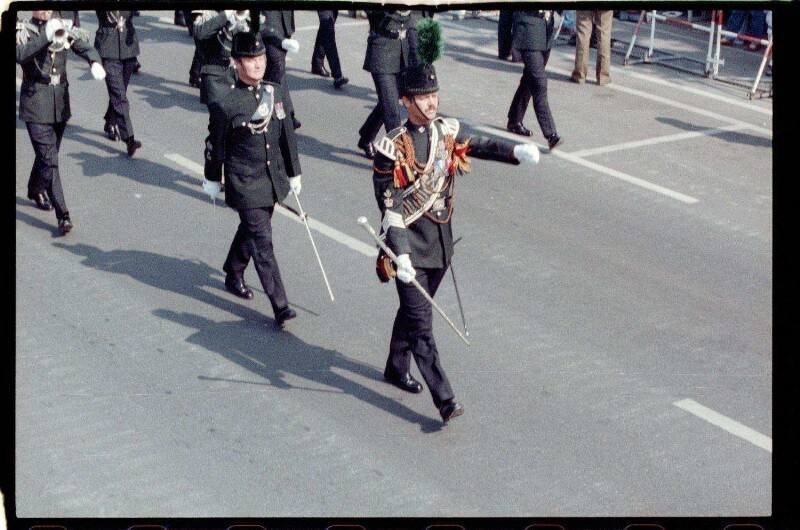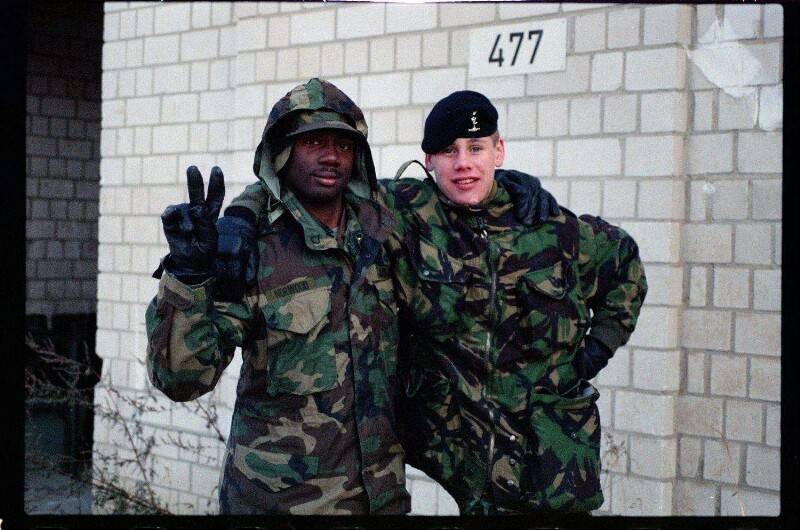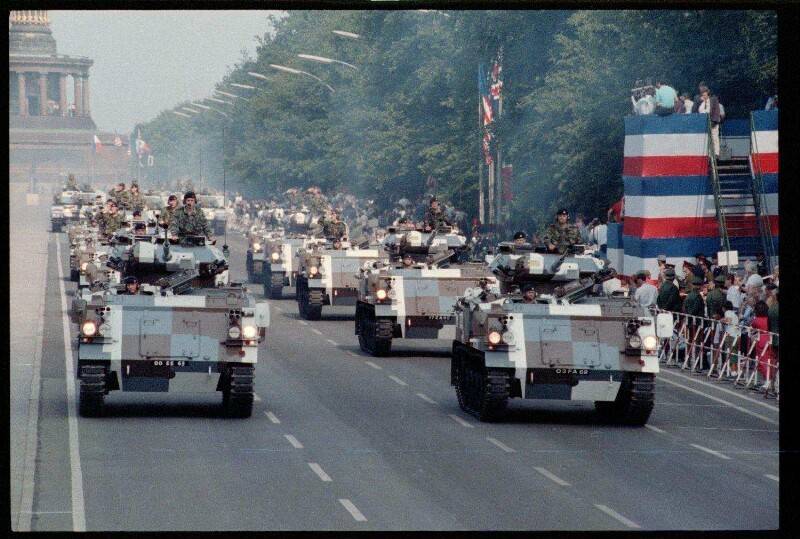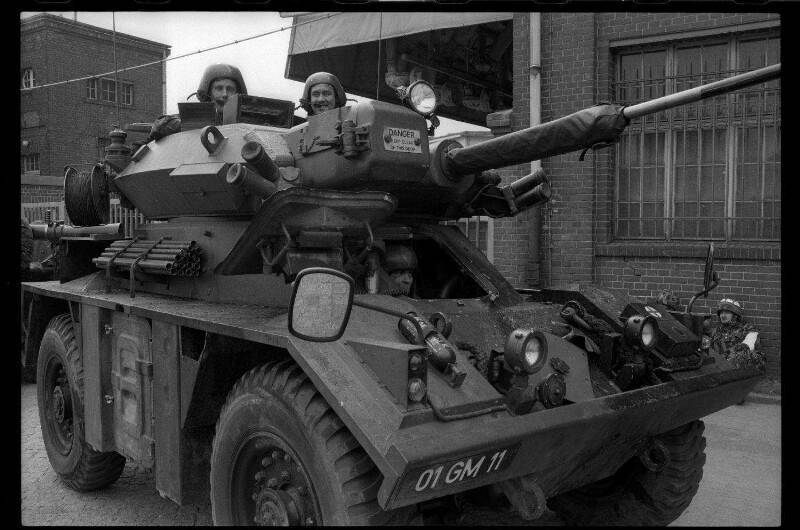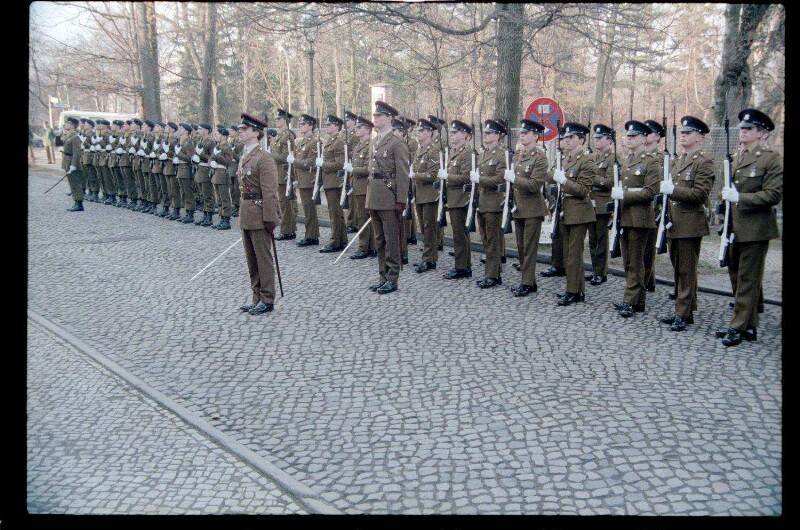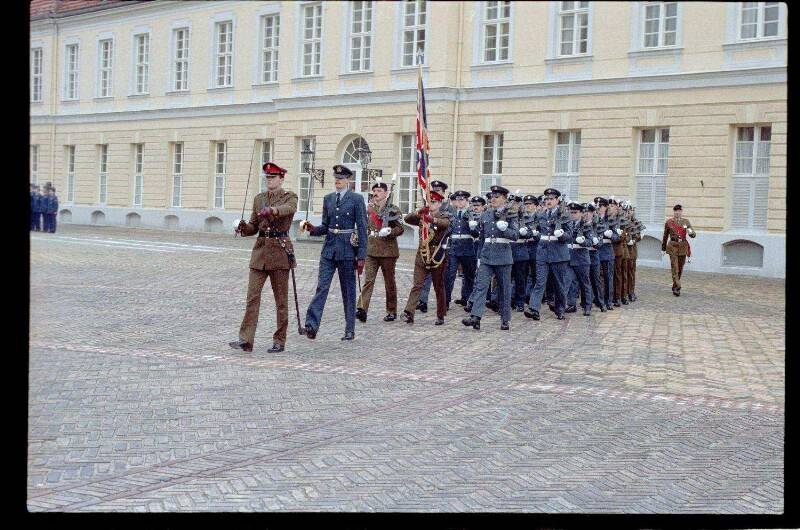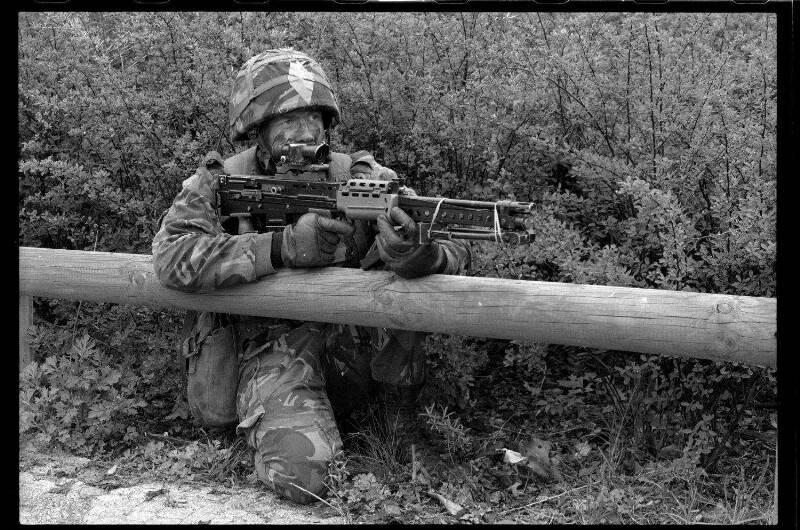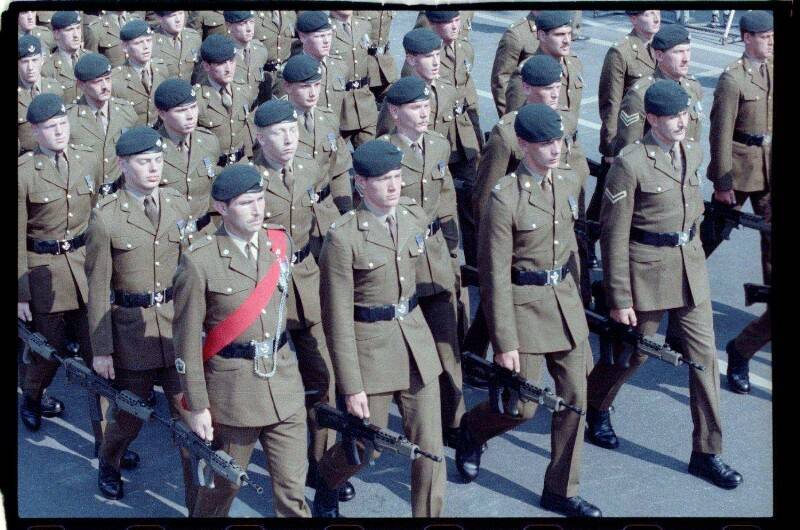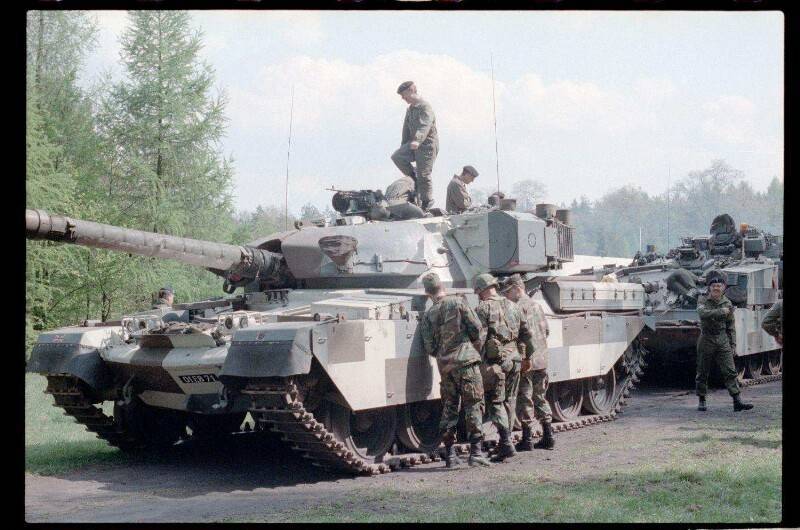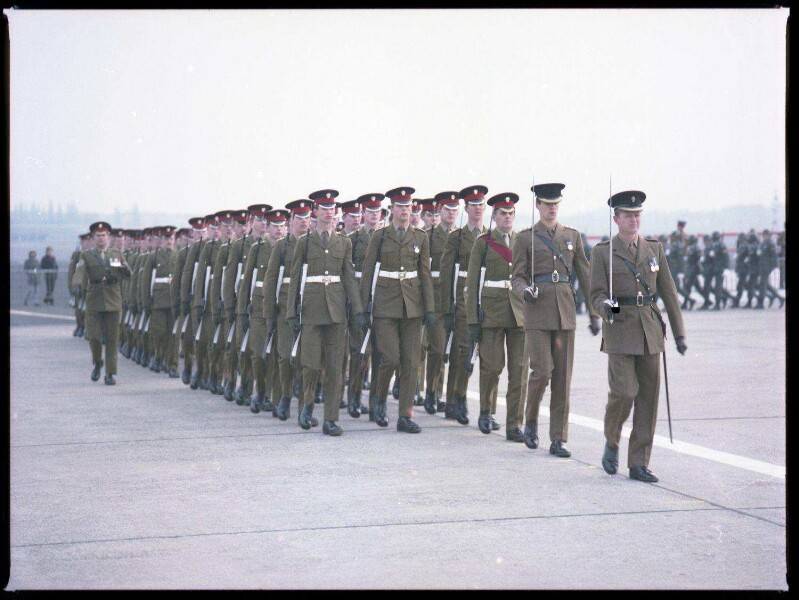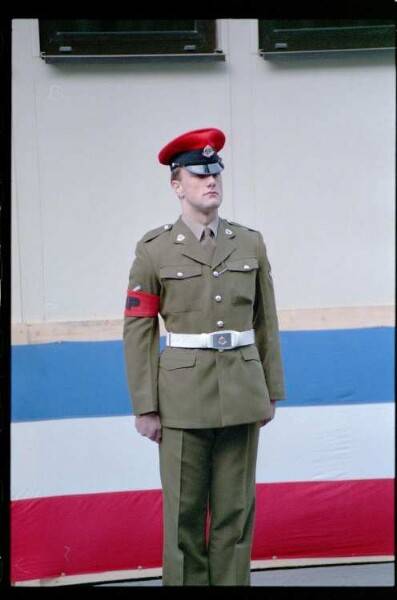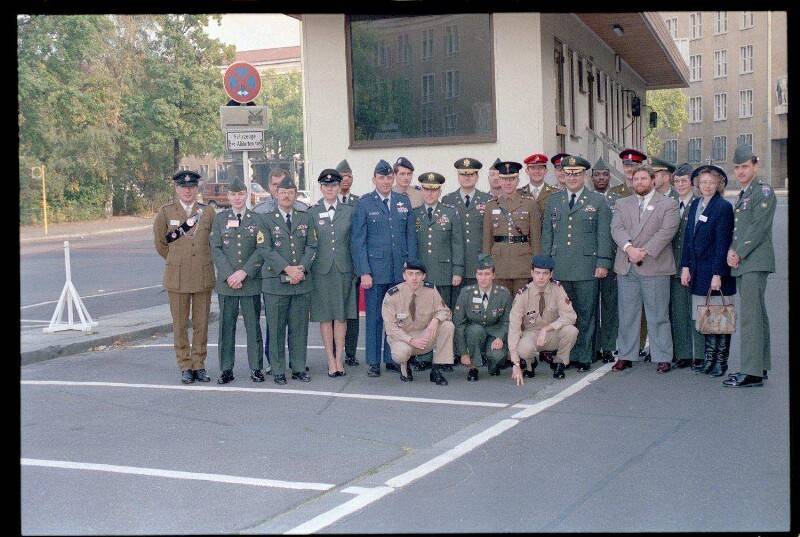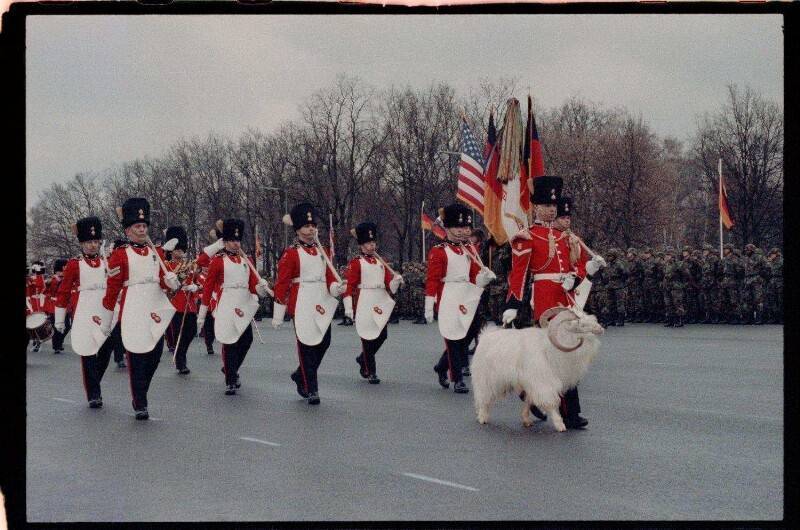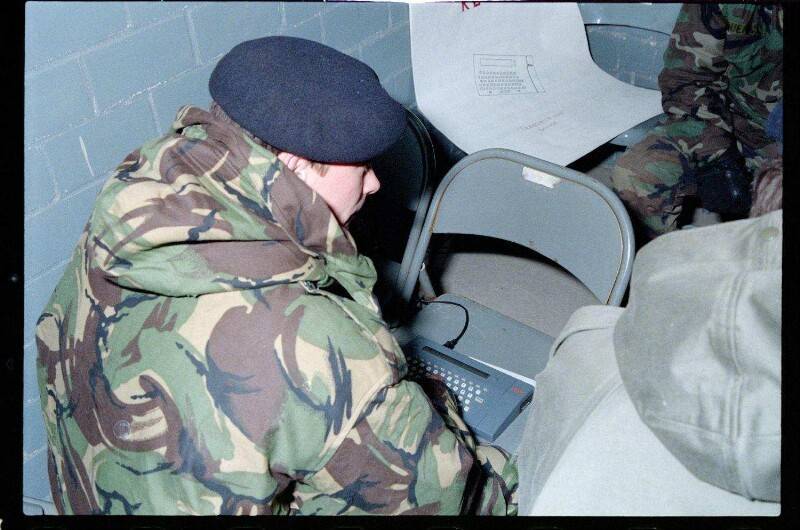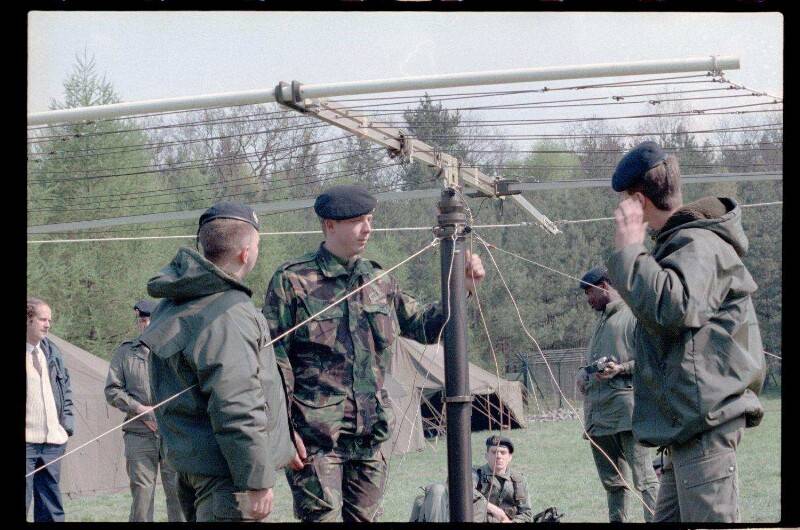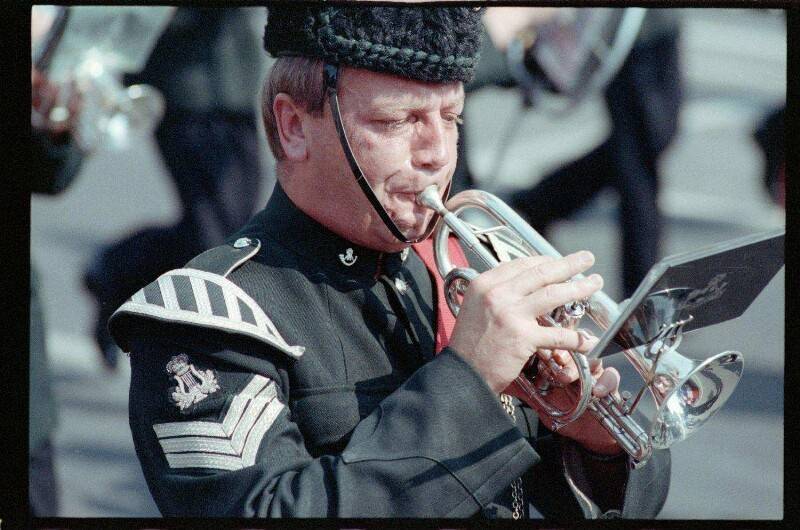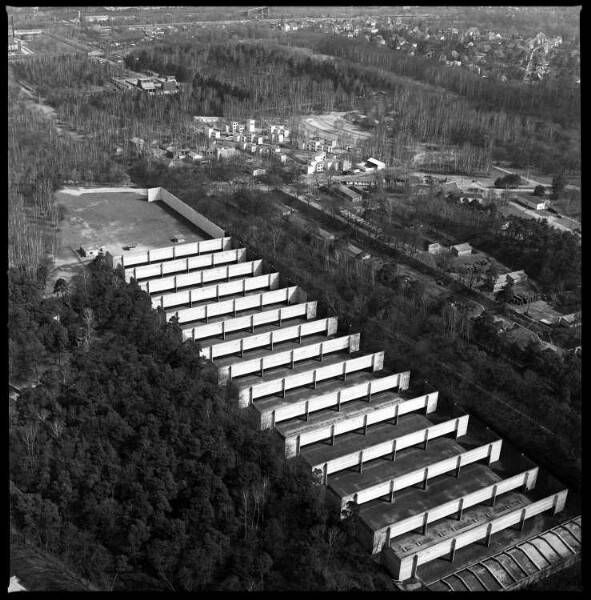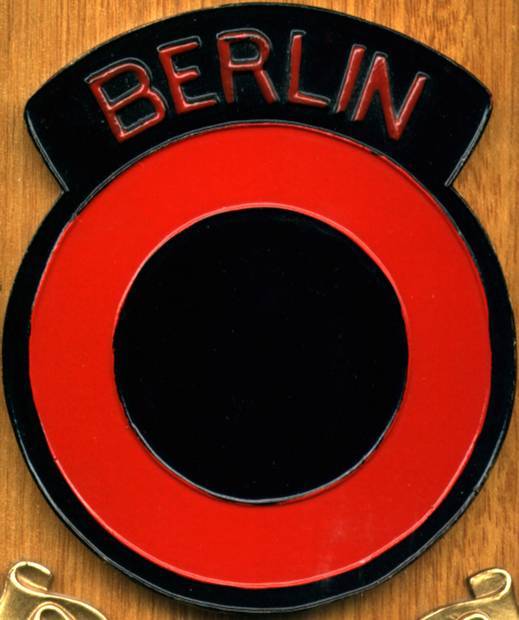The Berlin Infantry Brigade was formed in October 1953 out of the force called „Area Troops Berlin“ and consisted of some 3,100 men in three infantry battalions, an armoured squadron, and a number of support units. Its shoulder sleeve insignia was a red circle over a black background with the word Berlin in red on a black background running around the top. It was not initially part of the British Army of the Rhine despite being based in Germany. However, by the mid-1980s, the brigade is recorded to have become part of the BAOR, being its second major component after I (BR) Corps
In 1946 the military postal address for Berlin based British troops was ‚BAOR 2‘ but when the BFPO indication number was introduced in 1951 to was changed to ‚BFPO 45‘ and remained its address until the British troops were withdrawn from Berlin in 1994.
The three infantry battalions and armoured squadron assigned to Berlin were rotated regularly; the single armoured squadron was detached from an armoured regiment assigned to I (BR) Corps. The infantry battalions were rotated every two years. All other units were permanently based in Berlin.
Structure
At the time when the Berlin Wall fell (9 November 1989), the operational structure of the British forces in Berlin was as follows:
- HQ Berlin
- Berlin Infantry Brigade
- Berlin Infantry Brigade HQ & (29th) Signal Regiment, Royal Signals
- 1st Btn, King’s Regiment, Wavell Barracks, (replaced by 1st Btn, Irish Guards December 1989)
- 1st Btn, The Light Infantry, Brooke Barracks
- 1st Btn, Royal Welch Fusiliers, Montgomery Barracks
- C Squadron, 14th/20th King’s Hussars, Smuts Barracks, (14x Chieftain)
- 6 Troop, 46 (Talavera) Air Defence Battery, 2 Field Regiment, Royal Artillery, (12x Javelin)
- 38 (Berlin) Field Squadron, Royal Engineers Smuts Barracks
- Detachment, 164 Railway Operations Company, Royal Engineers
- Berlin Postal & Courier Troop, Royal Engineers
- 2nd Regiment, Royal Military Police
- 246 (Berlin) Provost Company, Royal Military Police, in Helmstedt, mans Checkpoint Alpha
- 247 (Berlin) Provost Company, Royal Military Police, mans Checkpoint Bravo and Checkpoint Charlie
- 248 German Security Unit, support unit with German personnel
- 3 Squadron, 13 Signal Regiment (Radio), Royal Signals, Signals Intelligence at RAF Gatow & Olympic Stadium
- 3 Intelligence and Security Company, Intelligence Corps
- 7 Flight AAC, RAF Gatow, (4x Gazelle AH.1)
- Royal Air Force Gatow Station Flight, (2x Chipmunk T10)
- No. 26 Signals Unit, Royal Air Force, (Signals intelligence at RAF Gatow and Teufelsberg
- British Military Hospital Berlin
- 2 Field Sanitation Section
- 50 British Red Cross Convalescent Home
- 194 Field Dental Centre
- 62 Transport & Movements Squadron, Royal Corps of Transport
- Movement Control Office (MCO) Gatow
- 14 (Berlin) Field Workshop, Royal Electrical and Mechanical Engineers, Alexander Barracks
- Berlin Ordnance Company, Royal Army Ordnance Corps
- Ordnance & Ammunition Depot, Royal Army Ordnance Corps
- 93 Section Special Investigation Branch, Royal Military Police
- 31 Quartering and Barracks Office, Royal Army Ordnance Corps
- 504th Commander Royal Army Service Corps (CRASC) (Overseas Deployment Training)
- Detachment, 2 Independent Petrol Platoon, Royal Army Ordnance Corps
- 121 Barracks Stores, Royal Army Ordnance Corps
- 122 Barracks Stores, Royal Army Ordnance Corps
- 131 Detail Issue Depot, Royal Army Ordnance Corps
- 3 Station Maintenance Section, Royal Army Ordnance Corps
- District Depot Railways Berlin – Lines of Communication
- Railway Transport Officer Station Spandau
- Railway Transport Officer Station Grunewald
- Railway Transport Officer Station Charlottenburg
- BRIXMIS, British Commanders‘-in-Chief Mission to Soviet Forces in Germany administered by Berlin Bde HQ
- Berlin Infantry Brigade
Under the treaties that enabled the German reunification, all non-German military forces were required to leave Berlin. Therefore the brigade was reduced to two battalions in 1992, then further reduced in 1993 to a single battalion. Finally Berlin Infantry Brigade was officially disbanded in September 1994 and its troops moved to the United Kingdom or British Forces Germany garrisons.

